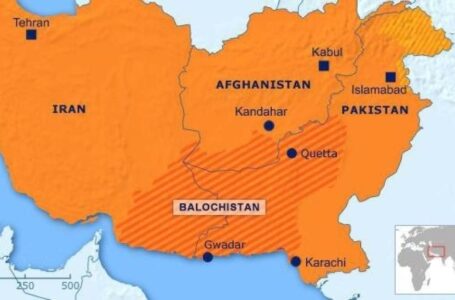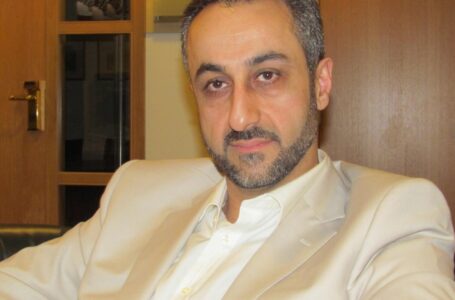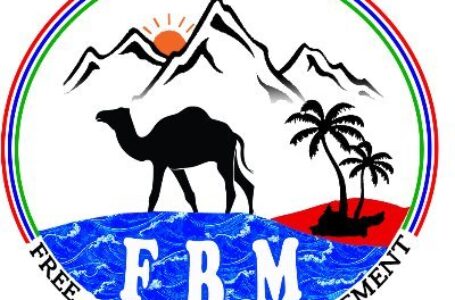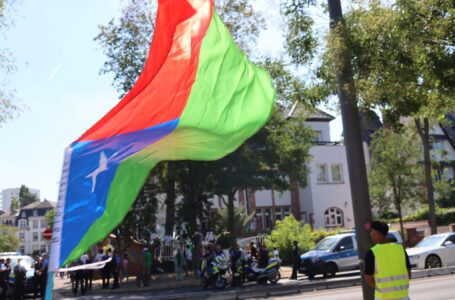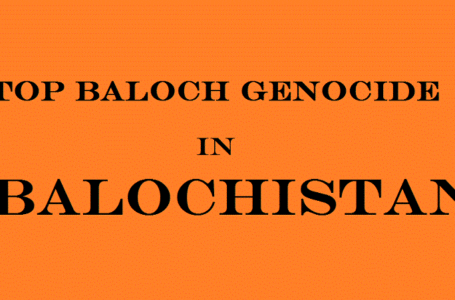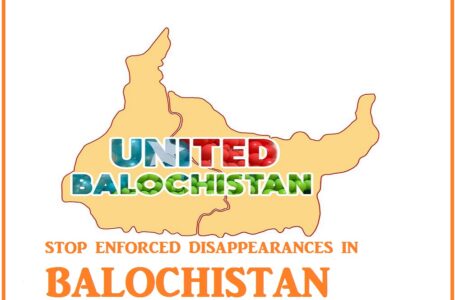Indian State Should Focus on Unconventional Methods: Jamal Nasir Baloch
ISIS in Balochistan: A Myth or reality
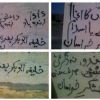
Balochistan: Painting in support of Daesh
The fast growing Islamic extremist Jihadist organisation in the Middle East, DAAESH or ISIS, came into existence after developing difference and breaking ties with Al-Qaeeda in April 2013. This religious fanatic organisation in based in Iraq and Syria and it claims that pro-Shiite governments in these countries are against Sunni ideology. So far their prime target has been Shiite governments and the Shiite community in particular, they have killed thousands of Shiite people, but to expand their border they are also fighting against Sunni extremist organisation Al-Nusra Front and the Kurdish people.
The leader of DAAESH Abu-Bakr AL Baghdadi has declared himself the Caliph of Muslims and urged everyone to accept and follow him. Baghdadi was a follower of Abu Musab Al-Zarqawi who was a Jordanian member of the Al-Qaeeda and he was known for his anti-Shiite within Al-Qaeeda. He used to head a training Camp in Afghanistan but he was later assigned to lay the foundation of Al-Qaeeda in Iraq where he was eventually killed during a US air strike. It was Zarwaqi who first developed differences with Al-Qaeeda because of his extreme views and actions against Shiites and for his advocacy for the Islamic State (IS). In this regard Ayman al-Zawahiri and Zarqawi’s differences deteriorated and eventually resulted in the establishment of DAAESH.
Many analysts say that DAAESH acquired its modern war tactics from ex-military generals and experts from Saddam Hussain’s Bath Party. The remnants of Bath have formed an alliance with the DAAESH. According to experts DAAESH is considered one of the richest organisations. It generates its revenue from Gulf States including Kuwait and Saudi Arabia, it also earned enormous wealth after it occupied and sold the oil wells and antiques in Iraq and Syria. They also get money through extortion and kidnappings for ransom.
Initially DAAESH desired to establish the Islamic State of Iraq and Syria (ISIS) but later a new map of the Islamic State (IS) came in the light which includes South Asia as part of the Islamic State. Soon after this map there were rumours that DAAESH will advance as for as Pakistan. Suddenly, wall chalking in support of IS/DAAESH appeared on walls in Makuran area of Balochistan. Interestingly, the pro-DAAESH walking threatened to kill the Zikri Baloch who are already on the target state backed criminal organisations which operate under religious names. Based on this wall chalking there has been enough noise in media about IS’s arrival to Pakistan, similar wall chalking and a video also occurred in Karachi and DAAESH’s literatures were distributed in Afghan refugee camps. During this time five commanders of Taliban under the leadership of Sahidullah Shahid announced to join DAAESH and accepted Al Baghdadi as their Caliph. The probable advance of DAAESH toward Pakistan become clear when on 21 October Masood Khan the Pakistani delegate to Security Council has described DAAESH as a symbol of terrorism and he suggested that all nations should unite to fight against them. Sequence of events shows that DAAESH intends to expand its grip to Pakistan and it will appear from Balochistan.
Despite all the predictions analysts and experts do not agree with assertion that DAAESH has any intentions to advance towards Pakistan because historically all the religious groups in that region have been supported by Al-Qaeeda and the Pakistan’s armed forces (Military and ISI). DAAESH broke away from Al-Qaeed and the tension between the two still continues, in Syria the Al-Nusra Front (a sub-branch of Al-Qaeeda) and DAAESH attacked each other on several occasions. Given the growing popularity of DAAESH the Al-Qaeeda would never want them to have a foothold in South Asia that is why Ayman al-Zawahiri announced to open a new branch which will be headed by Indian born Asim Omar. This development of Al-Qaeed is being seen a precautionary step to counter DAAESH. On the other hand Afghan Taliban are allied with the Al-Qaeeda and they consider Mullah Omar as their caliph, so far there are no such indication that the Taliban will replace Omar with Baghdadi in near future. That is why experts reject the speculations of any cooperation between the Taliban and DAAESH in future.
The Pakistani ISI’s connection with the Taliban are not hidden anymore and last year Pakistan with the help of Turky sent several Taliban fighters in support of Al-Nusra Front – the same Al-Nusra which is fighting against DAAESH over control of several areas. Many experts are of the opinion that Pakistan’s secret agencies ISI etc. are deliberately spreading rumours about DAAESH’s presence in Pakistan and they want to create an environment of terror and fear. To accomplish this purpose the Pakistani intelligence agencies create some minor groups in support DAAESH in an effort to carry out attacks to spread more terror so that Pakistan can get additional financial and military support from West in the name of DAAESH’s presence and to counter them.
In this context the emergence of DAAESH in Balochistan is considered a deliberate attempt of Pakistan to portray Balochistan as a stronghold of religious extremists, especially the DAAESH, to prepare international opinion. In the future Pakistan will conduct massive operations against Baloch freedom movement at the cost of Western support i.e. from the Western tax payers’ money, in the name of operation against DAAESH. It will be an enormous challenge for the Baloch freedom seeking organisations to not only maintain their secular norms but also to convince the rest of the world that Baloch are a tolerant society. They [Baloch] also need to show that in Balochistan there are no religious organisations apart from the religious proxies of Pakistani army and ISI and these groups are supported by Pakistan against Baloch freedom movement. The Western support to Pakistan will further strengthen these religious extremists. The only solution to keep this region stable is to support and strengthen the secular Baloch people.

